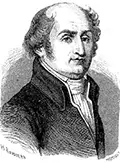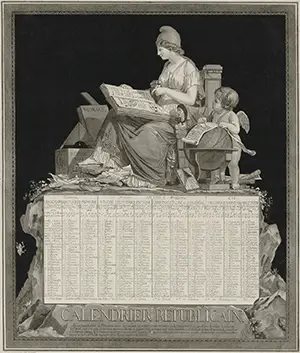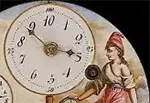The French Republican Calendar
The National Convention, which ruled France during the Revolution, created a new calendar, showing the days, months, and years as distinctly different from what had come before. 
The Convention, in one of many efforts to distinguish a new era from what many regarded as a hated past, designated a commission to create the names and details for the new calendar. Heading the commission was Charles-Gilbert Romme (left), a mathematician who served on the Committee of Public Education (and later served as President of the National Convention). Assisting Romme were a number of other scientists. The French Republican Calendar began with the autumnal equinox and divided the year into 12 months, each having 30 days. That left five days (or six in a Leap Year) at the end of the year, before the next autumnal equinox. The Convention designated those days Complementary Days. 
The autumnal equinox in France routinely occurred in the third week of September, usually on the 22nd, 23rd, or 24th. The new calendar's months, in order, were these:
The Convention dictated that the week had 10 days, which were named the English equivalent of "first day," "second day," etc.:
As for the year, that changed as well. The Convention decreed that 1789, the year of the Storming of the Bastille was Year Ⅰ, using Roman numerals. However, the Convention also stipulated that the date of the introduction of the Republican Calendar (which on "old" calendars was Sept. 22, 1793) was 1 Venémiaire of Year Ⅱ. (Days appeared as Arabic numerals.) 
The Convention went further, dividing the day into 10 hours, each of which had 100 decimal minutes, each of which had 100 decimal seconds. The result was a decimal hour that lasted as long as 144 conventional minutes. Clockmakers built timepieces to display decimal time. This convention ended in April 1795. The Republican Calendar designations remained in use until 1805. |
|
Social Studies for Kids
copyright 2002–2024
David White




